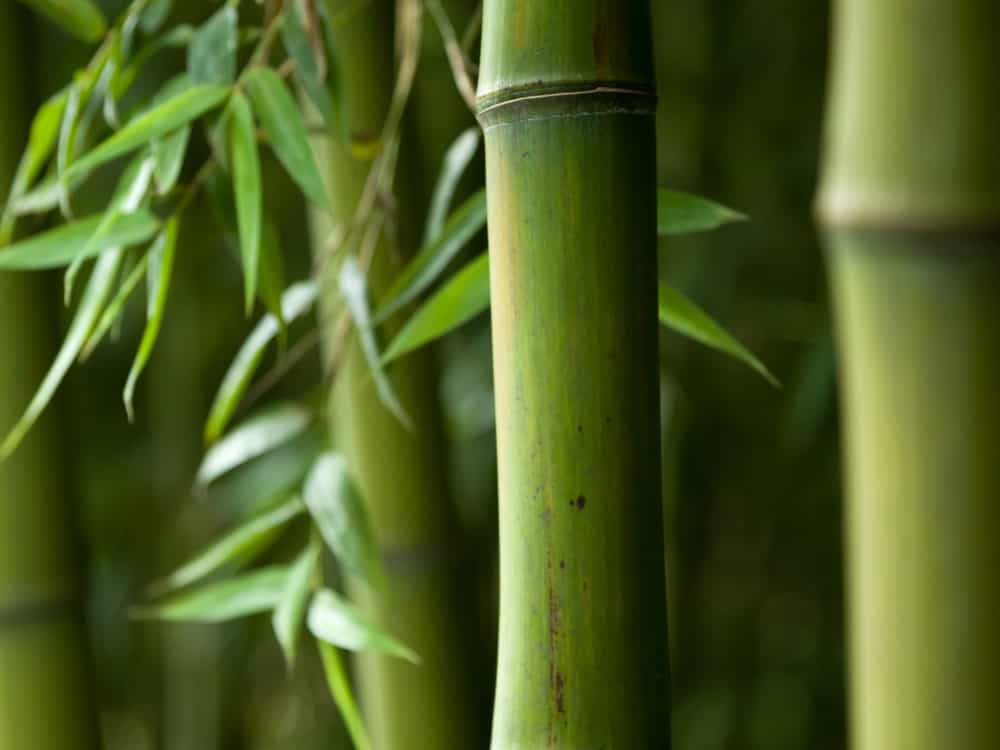
What is Bamboo Fabric & is It Sustainable?
Bamboo fabric: a panda-feeding, Earth-friendly material OR a trending fabric dangerously prone to greenwashing?
It’s rapid growth in the sustainable fashion is almost as prolific as the growth of the plant itself, but as with any supposedly sustainable fabric, it deserves some scrutiny.
If you’re feeling bamboo-zled about bamboo fabric sustainability, read on as we weed out misleading claims and discover whether truly green bamboo textiles exist.
The Full List Bamboo Fabric Sustainability Considerations
- What is bamboo fabric made of?
- How is bamboo fabric made?
- Is bamboo fabric sustainable?
- Bamboo fabric properties and care
- Bamboo vs other fabrics
- Better bamboo brands
1. What Is Bamboo Fabric Made Of?
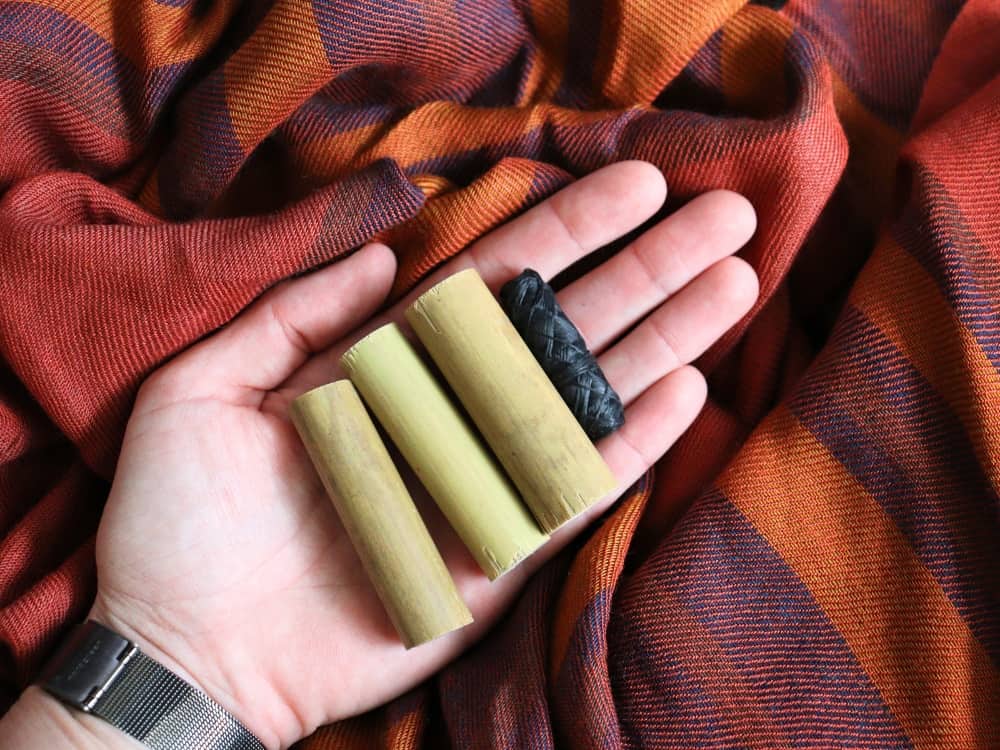
It (hopefully) won’t come as a shock to anyone that bamboo fabric is made from…bamboo.
Humans have been using bamboo for millennia, mostly for things like housing, sustainable furniture, and paper.
However, it wasn’t until the early 2000s that we started turning this miracle crop into clothing, an innovative idea credited (in some circles) to Beijing University.
In the twenty years since (particularly in the last decade), we’ve seen a veritable bamboo boom in the fashion industry.
So why all the hype?
Bamboo material is durable, breathable, and soft to the touch, which is why it’s used in bathrobes, towels, sustainable bedding, eco-friendly pillows, and clothing.
It’s also more stretchy than cotton, so it’s a popular in sustainable activewear, bamboo socks, and ethical underwear.
Greenwashing antennae at the ready, however, as not all bamboo fabric is created equal, and its eco-merits and fabric properties depend on how it has been made.
2. How Is Bamboo Fabric Made?
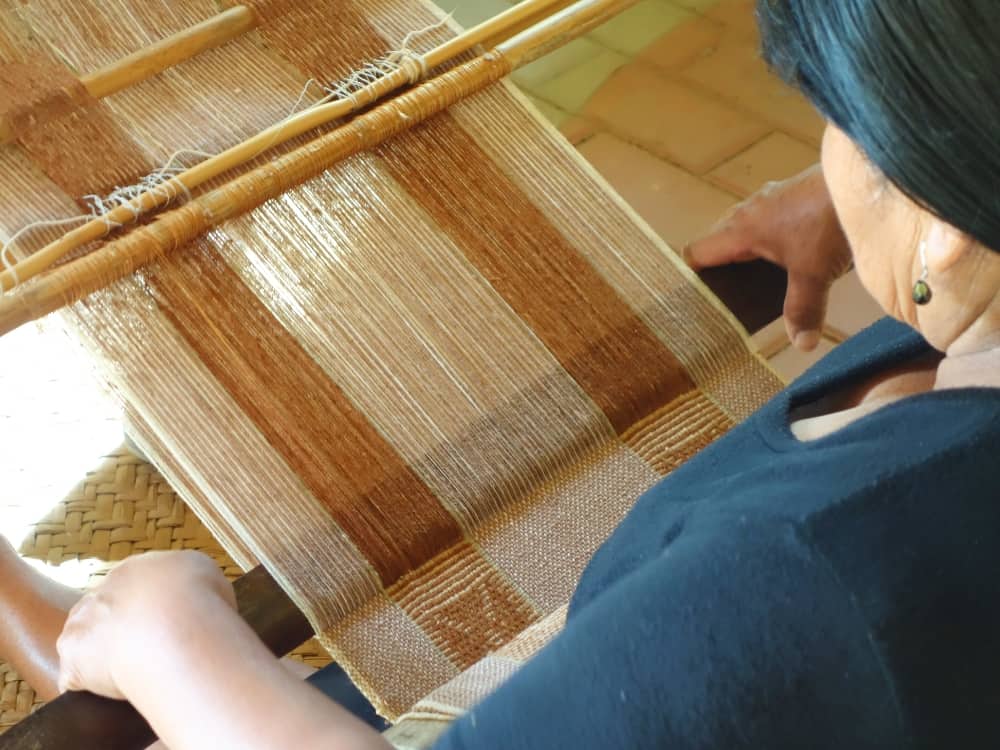
How does a piece of wood become soft and stretchy clothing?
There are a few methods.
What Is Bamboo Viscose Fabric?
Most of the bamboo fabric we find in clothes is bamboo viscose (AKA bamboo rayon). It’s cheap to produce but there’s a hidden cost to the planet and the people involved in its production.
Viscose from bamboo is produced much the same way as other types of viscose fabric.
- Cellulose is extracted from the bamboo wood pulp after it’s been broken down into tiny chunks. This requires chemical solvents, most of which are harmful (like caustic soda).
- This cellulose is then formed into sheets, processed with carbon disulfide (another toxic chemical), and pushed through a spinneret to create strands.
- The strands are finally submerged in yet another toxic chemical (sulfuric acid) so that the strands can be softened and spun into yarn.
Ultimately, about 50% of these hazardous waste solvents are released into the environment.
Bamboo Lyocell
If that makes you want to scratch bamboo off your list of sustainable fabrics, hang tight because there are other ways to make bamboo fabric that are better for the planet.
While following the same basic steps as above, bamboo lyocell (like any kind of lyocell fabric) is instead made in a closed-loop production process:
- To start with, the cellulose’s structure isn’t chemically altered, and the end product is compostable.
- Where the solvents (ideally less toxic ones, as some brands prove is possible) used in the production of bamboo rayon have to be disposed of, in this closed-loop process, they can be used again and again (along with all the water in the system).
All of our recommended bamboo brands (see below) use bamboo lyocell.
Mechanically Processed Bamboo
There is also a mechanical process for producing bamboo fabric that involves mechanically crushing the plant before adding natural enzymes to continue breaking it down.
Given the initial crushing, fewer enzymes are needed in this process. In the end, this leaves a mushy mass that can be mechanically spun into natural and sustainable yarn.
Unfortunately, this process is time-consuming and cost-intensive and isn’t common. You may only see this process with some types of high-end or luxury bamboo textiles.
The resulting fabric is also more akin to linen rather than the soft and silky bamboo viscose we’re more used to seeing.
3. Is Bamboo Fabric Sustainable?
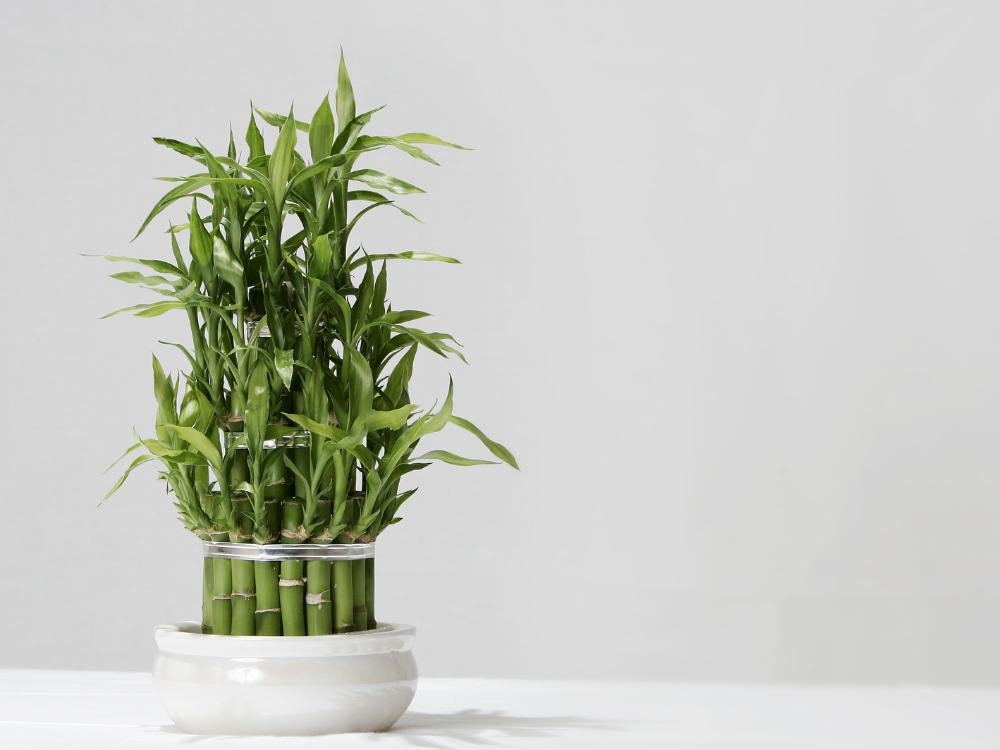
There are a few things to chew on when answering this question.
The bamboo plant itself (with a few caveats) is a very environmentally friendly crop. However, it can be (and often is) processed in an extremely harmful way.
Bamboo As A Crop
Bamboo is potentially a highly sustainable crop.
- It grows about 12 inches every day, making it one of the fastest-growing plants on Earth.
- It doesn’t require pesticides, fertilizers, or irrigation—only rainwater.
- New plants naturally grow from the shoots of the old plants, so harvesting doesn’t kill them.
- Bamboo grows easily in areas of the world where other crops are more challenging.
- Bamboo produces 35% more oxygen and absorbs five times more carbon than trees.
However, much of the world’s bamboo comes from China, where regulations are lax and chemical inputs (though not required) may be used to maximize outputs.
In some cases, land is cleared to grow bamboo, which threatens ecosystems (including those of our favorite bamboo-lovers, the Giant Panda).
As with any raw material, we need to ask questions regarding bamboo cultivation that ethical and transparent brands should be able to answer.
Organic Bamboo
Organic certifications, e.g., USDA or Ecocert, ensure that bamboo is grown in an environmentally responsible way.
Be aware, though, that while the raw material can be certified organic, bamboo fabric can only be certified organic if it has been made with mechanically produced bamboo fiber.
If you see organic claims regarding bamboo rayon, sound the greenwashing alarm and spend your money elsewhere.
Manufacturing Bamboo
As mentioned, most of the world’s bamboo fabric is produced in a way that will make anyone want to run for the hills.
It’s similar to other types of cellulosic rayon in terms of its intensive energy and chemical usage.
These pollute waterways and our air, as well as being toxic to the people who work with the material, leading to problems like chemical burns, nerve damage, and increased risk of other health complications.
Ultimately, bamboo viscose is a semi-synthetic fabric, produced in a way which, according to the Federal Trade Commission means there’s no actual bamboo in the final product.
Because of this, the FTC requires rayon from bamboo to be labeled as “rayon” or “rayon made from bamboo.” Only mechanically processed bamboo is allowed to be called “bamboo.”
How To Find Sustainable Bamboo Fabric
Our default is to avoid bamboo rayon unless a brand convinces us they’re in the minority group using closed-loop processes and non-toxic solvents.
Closed-loop rayon is better from a sustainability standpoint. It uses the same closed-loop process used to make lyocell, meaning that any toxic chemicals are reused and don’t pollute the environment.
Unless you can find mechanically processed bamboo (which doesn’t extract the cellulose and uses natural enzymes to break down the fibers instead), here are a few ways you can ensure that you’re buying sustainably:
- Look for lyocell-type bamboo fabric or that made in a closed-loop production method where the chemicals are recycled.
- Look for certified, non-toxic fabric (check for OEKO-TEX certification or bluesign® approval).
- Make sure workers have been treated fairly (check for third-party manufacturing certifications).
- Ensure the bamboo was grown organically (even if not officially certified) and in responsibly managed forests (check for sustainable forestry certifications, namely FSC).
4. Bamboo Fabric Properties & Care
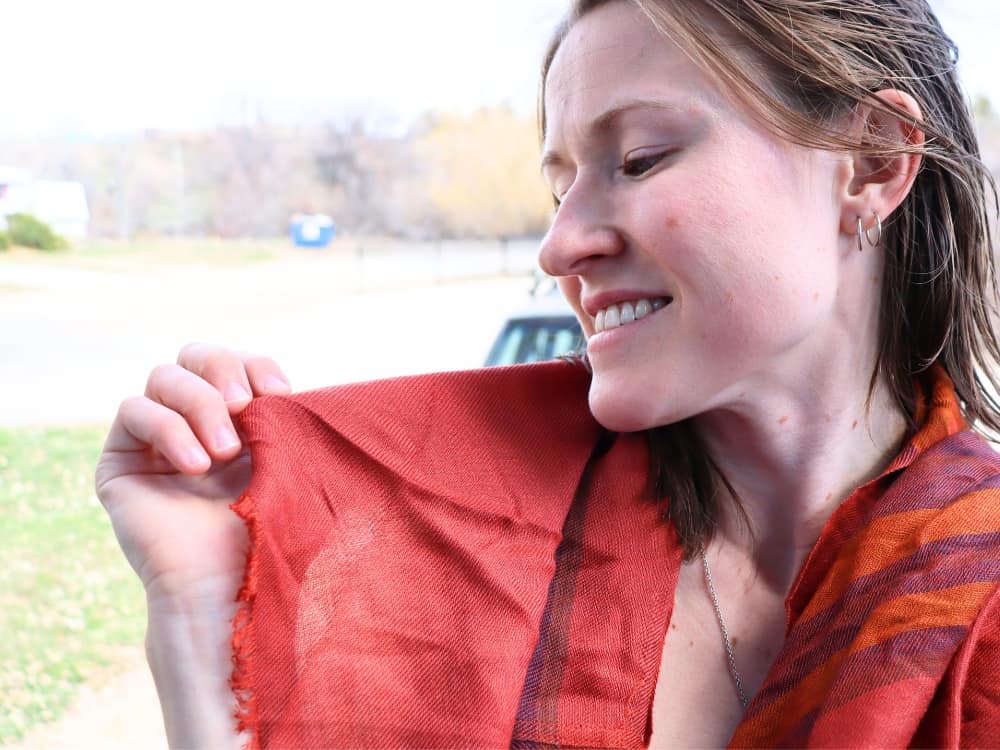
Bamboo fabric is breathable, has excellent moisture-wicking properties, decent heat retention, and high stretchability. It also has a nice drape and a silky texture. Sounds pretty great, right?
Well, it’s important to note that most other touted benefits—antibacterial, antifungal, and odor-resistant—are only found in bamboo that has been mechanically processed and are not found with viscose bamboo fabric.
On the downside, it’s prone to pilling and bubbling, which might not be so great for those yoga pants you wear all the time.
But otherwise, it’s relatively easy to care for.
It can be either machine-washed, but does better in cold to warm water (which is also better for the planet as it uses less energy).
Eco-friendly fabric softeners aren’t necessary, choose a gentle detergent, and do not bleach.
Line drying is the best option, but if you use a clothes dryer, choose the cool setting (again, better for the planet).
5. Bamboo Vs Other Fabrics
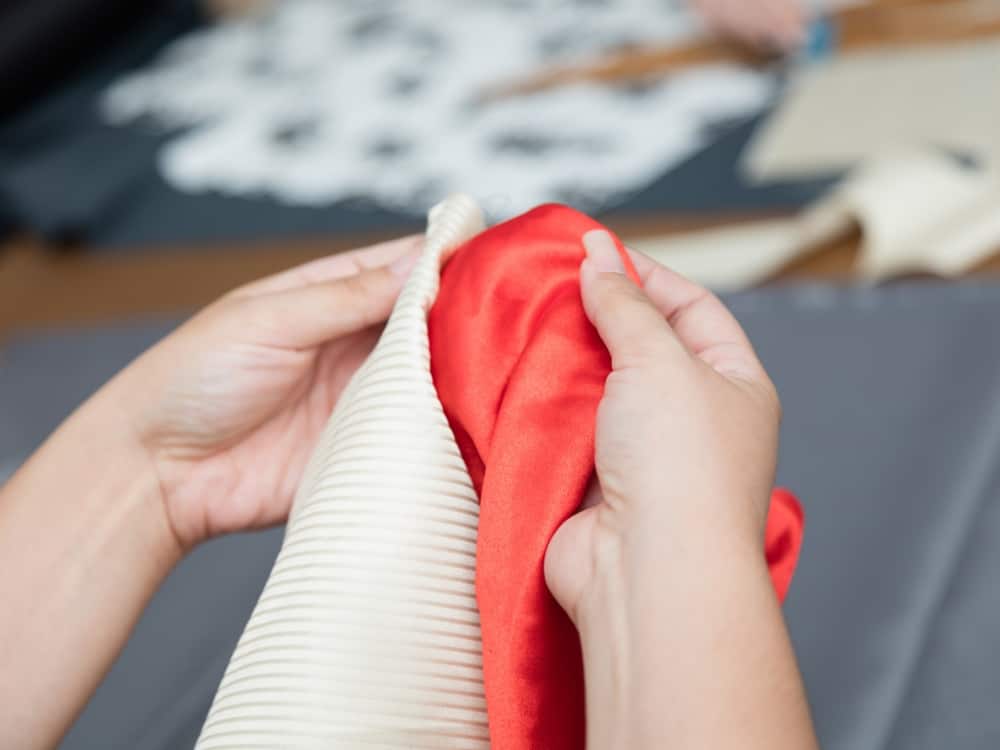
Bamboo Fabric Vs Cotton
When it comes to growing the raw materials, bamboo is superior. It’s naturally pest-resistant and doesn’t require fertilizers. Conventional cotton, on the other hand, uses a significant amount.
Additionally, bamboo requires just a third of the water necessary for cotton. It’s even less water-consuming than organic cotton.
However, when it comes to the final product, most bamboo fabric isn’t much better than conventional cotton.
The Made-By Environmental Benchmark for Fibres rate them the same—and in their lowest rated category.
Bamboo Fabric Vs Rayon
Spoiler alert: most bamboo fabric is the same as rayon fabric.
In fact, you could consider that bamboo viscose, standard viscose fabric, and rayon are all the same material.
General viscose can be made from lots of different plants other than bamboo, but the basic process is the same.
The exceptions to this are mechanically processed bamboo and bamboo viscose manufactured using a closed-loop system and non-toxic solvents.
Bamboo Fabric Vs Hemp
Hemp fabric, particularly organic hemp fabric, is far more sustainable than bamboo.
The hemp plant requires even less inputs than bamboo, and its production is much kinder to the planet and the people who process it.
It’s also better at retaining the plant’s beneficial properties (i.e. durability, antibacterial properties) in the final garment.
6. Better Bamboo Brands
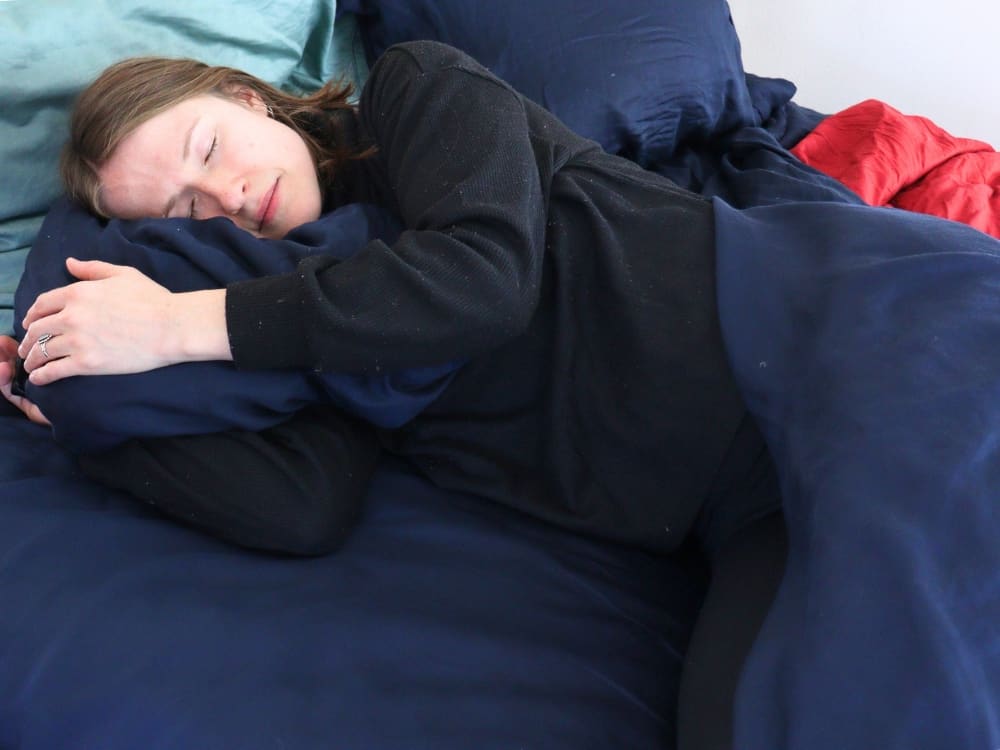
When it comes to home textiles and clothing made from bamboo, due diligence is required to find brands using a genuinely sustainable bamboo fabric.
- Boody’s basics are made from organically-grown Ecocert and FSC-certified bamboo using non-toxic solvents in a closed-loop process. They also use LYOLYTE®, a bamboo lyocell made using a process that recycles 99% of the solution.
- Named CleanBamboo®, ettitude’s bamboo lyocell is made using a food-grade organic solvent in a closed-loop system that recycles 98% of the water. All their bedding and basics are OEKO-TEX certified.
- Movesgood uses bamboo lyocell processing using only one chemical, NMMO (N-Methylmorpholine N-oxide), which is recycled.
Did you know we Have a Newsletter?
We cover the latest in sustainable living, fashion, zero waste, beauty, travel, finance and more…
Final Thoughts On fabric made from bamboo
The sustainability of bamboo fiber clothing isn’t as black and white as those pandas.
While eco-friendly bamboo fabrics do exist, you need to do a little extra research to avoid being a victim of greenwashing.
In other words, don’t beleaf everything you hear.
Remember, the most sustainable fabric is in your wardrobe—no need to replace a perfectly good top just because a bamboo blouse is in.
Know any eco-conscious fashionistas?
Share this article and help keep conversations about sustainable fashion rolling.
Pin these:
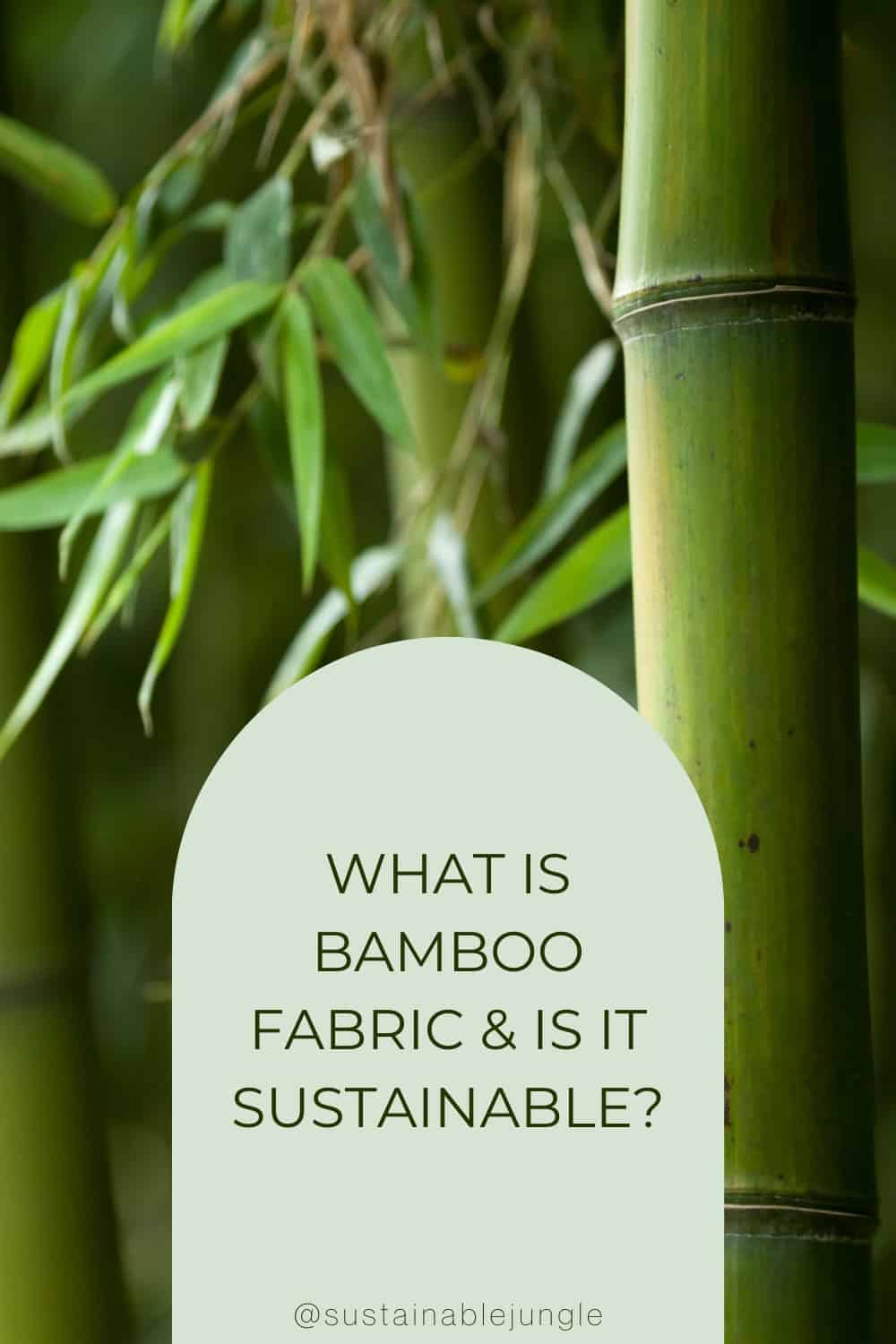


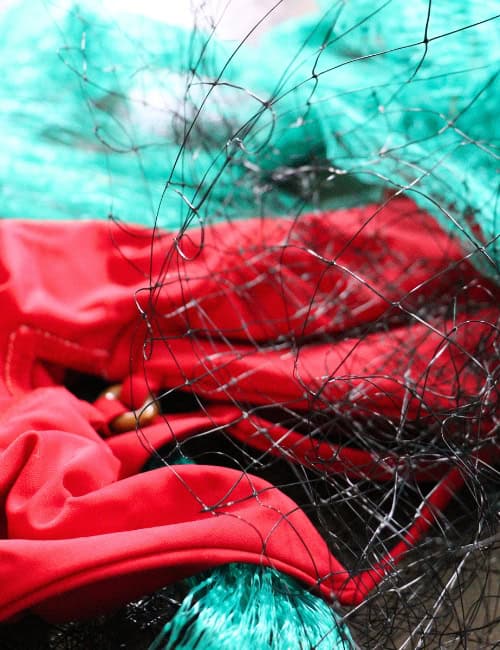
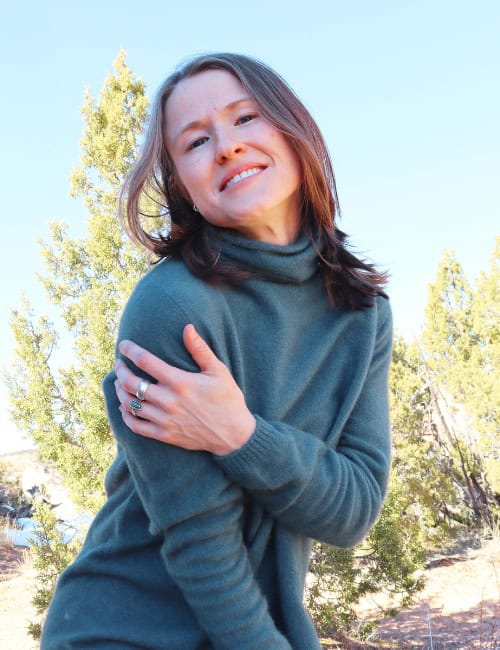
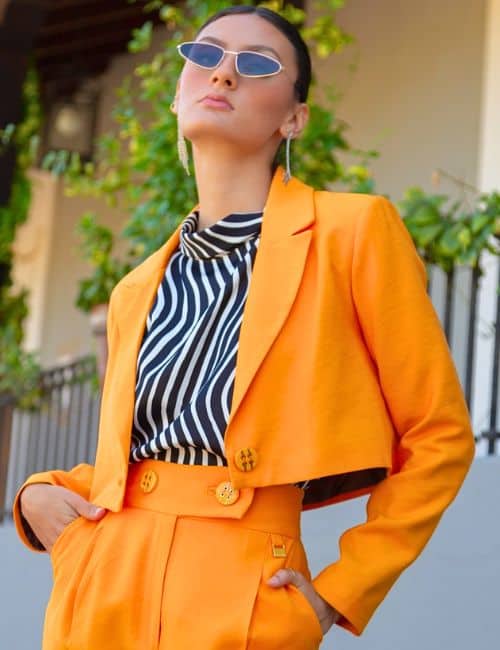
What about “Oprah’s favorite pjs?” How do you feel about the bamboo in those?
What about “Oprah’s favorite pajamas?”
Hey Barbara, I had to google this and couldn’t quickly find them. I found a brand that claims to be Oprah’s favorites but they were made of Polyester. Would you mind linking in which PJs you mean?